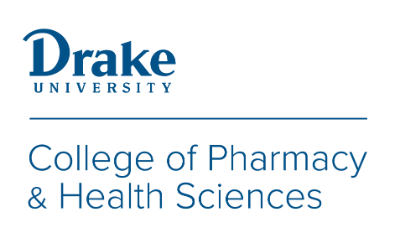Biomarkers for Radiation-Induced DNA Damage during Human Space Exploration
Project Overview
Radiation induced DNA-damage represents the ultimate form of insult to the astronauts’ genetic material because of the chronic, and often, heritable nature of the health effects caused by such damage. Breakage of the phosphodiester backbone of DNA is the primary form of damage caused by the high energy cosmic rays. Eukaryotes including humans are able to repair such DNA strand breaks; however, longer/repeated exposure to high-energy cosmic rays results in an imbalance between the damage and repair cycles, leading to genome instability, even heritable mutations. Thus, it is critical to monitor stability of astronauts’ DNA during and after space travel. Specific proteins involved in the DNA repair pathways could potentially serve as biomarkers of radiation induced DNA damage. Recent studies have implicated role of proteases in DNA damage repair. Preliminary data from our lab has identified a novel nuclear matrix metalloprotease (nMMP) activity associated with DNA strand break repair. During this grant period, we will carry out purification and biochemical as well as immunochemical characterization of nMMP with the ultimate goal of developing nMMP as a biomarker of radiation induced DNA damage for monitoring genome stability of astronauts during and after space travel, contributing to safer manned space exploration. Based on the extensive research and mentoring experience of the PI and Co-PI, we are confident of completing the proposed research in a time bound manner and within the proposed budget and resources. Our project promises to generate new knowledge in the important area of genome stability and human health, with high potential for generation of intellectual property. Additionally, our project will serve as a vehicle to attract and train Drake students in biomedical research, another important strategic goal for NASA, ISGC and Drake University.
What Causes DNA Damage?
1) Exogenous - having an external origin.
Examples:
- ionizing radiation (IR)
- ultraviolet (UV) radiation
- various chemicals agents
2) Endogenous - caused by factors inside the organism.
Examples:
- exposure to reactive oxygen substances (ROS)
- reactive metabolites
- hydrolysis
- oxidation
- alkylation
- mismatch of DNA bases
- free radicals
How Do Cells Repair DNA Damage?
Base Excision Repair (BER) - corrects small base lesions that do not significantly distort the DNA helix structure.
Steps:
- excision of the base
- incision
- end processing
- repair synthesis, including gap filling and ligation
Nucleotide Excision Repair (NER) - process by which helix-distorting DNA lesions.
Steps:
- damage recognition
- subunit assembly
- dual incisions that result in excision of the damage-containing oligomer
- resynthesis to fill in the gap
- ligation to regenerate an intact molecule
Mismatch Repair (MMR) - system for recognizing and repairing erroneous insertion, deletion, and mis-incorporation of bases.
Steps:
- A mismatch is detected in newly synthesized DNA. ...
- The new DNA strand is cut, and a patch of DNA containing the mispaired nucleotide and its neighbors is removed.
- The missing patch is replaced with correct nucleotides by a DNA polymerase.
- A DNA ligase seals the remaining gap in the DNA backbone.
Homologous Recombination (HR) - DNA metabolic process found in all forms of life that provides high-fidelity, template-dependent repair.
Steps:
- Strand exchange
- Branch migration
- Resolution
Non-Homologous End Joining (NHEJ) - is a pathway that repairs double-strand breaks in DNA. NHEJ is referred to as "non-homologous" because the break ends are directly ligated without the need for a homologous template
Steps:
- DNA end recognition and assembly and stabilization of the NHEJ complex at the DNA double-strand break
- Bridging of the DNA ends and promotion of end stability
- DNA end processing
- Ligation of the broken ends and dissolution of the NHEJ complex
Consequences of Damage Without Repair
Apoptosis
- The death of cells which occurs as a normal and controlled part of an organism's growth or development.
Genomic instability
- The increased tendency for DNA mutations (changes) and other genetic changes to occur during cell division.
Mutant Phenotype
- An individual having a phenotype that differs from the normal phenotype.
- Cancers
- Improper protein functions
- Proteins fail to associate
Meet the Team
 |  |
|---|---|
| Pramod Mahajan, B.S., M.S., Ph.D, Professor of Pharmacology |
Abebe Mengesha, M.S., Ph.D, Associate Professor of Pharmaceutical Sciences |
-220x330.jpg) |
-220x330.jpg) |
| Brittany Weichman, PharmD Candidate 2022, Research Assistant |
Ali Goldensoph, PharmD Candidate 2024, Research Assistant |
-220x330.jpg) |
 |
| Anna Braun, PharmD Candidate 2025, Research Assistant |
Tepary Cooley, 2024 Research Assistant |
 |
|
| Abbie Whittemore, 2024 Research Assistant |
Fun Facts
- DNA is the acronym for deoxyribonucleic acid.
- DNA and RNA are the two types of nucleic acids that code for genetic information.
- DNA is a double-helix molecule built from four nucleotides: adenine (A), thymine (T), guanine (G), and cytosine (C).
- Genes make up only about 3 percent of your DNA.
- Genes are short segments of DNA, but not all DNA is genes. All told, genes are only about 1-3% of your DNA. The rest of your DNA controls the activity of your genes.
- Genes are short segments of DNA, but not all DNA is genes. All told, genes are only about 1-3% of your DNA. The rest of your DNA controls the activity of your genes.
- Your DNA could stretch from the earth to the sun and back ~600 times.
- If unwound and linked together, the strands of DNA in each of your cells would be 6 feet long. With 100 trillion cells in your body, that means if all your DNA were put end-to-end, it would stretch over 110 billion miles. That’s hundreds of round trips to the sun!
Poster Presentations
Developments of a Stability-Indicating Reverse-phase HPLC Method for M1 Peptide Extracts. Ali Goldensoph, Abebe Mengesha, Pramod Mahajan. Poster Presentation. 2021. HPLC-Presentation
Interactions Between Mammalian DNA Repair Proteins. Brittani Weichman, Anna Braun, Abebe Mengesha, Pramod Mahajan. Poster Presentation. 2021. MGMT-Presentation
Analysis of Double-Strand Break Repair Pathway Genes in Human Cancer Cell Lines. Anna Braun, Abbie Whittemore, Tepary Cooley, Abebe Mengesha, Pramod Mahajan. Poster Presentation. 2022. ISGC-Presentation
A Thin Layer Chromatography Purification Method for Peptide Extracts from Sample M. Ali Goldensoph, Abebe Mengesha, Pramod Mahajan. Poster Presentation. 2022. B4-Presentation
Doxorubicin Treatment Enhances B-Raf Degradation in Human Cancer Cells. Anna Braun, Abebe Mengesha, Pramod Mahajan. Poster Presentation. 2024. Presentation
Literature
DNA damage and repair following traumatic brain injury
Davis CK, Vemuganti R. DNA damage and repair following traumatic brain injury. Neurobiol Dis. 2021 Jan;147:105143. doi: 10.1016/j.nbd.2020.105143. Epub 2020 Oct 28. PMID: 33127471.
Hydrogen sulfide and DNA repair
Shackelford, Rodney, Ekin Ozluk, Mohammad Z. Islam, Brian Hopper, Andrew Meram, Ghali Ghali, and Christopher G. Kevil. “Hydrogen Sulfide and DNA Repair.” Redox Biology 38 (2021): 101675. https://doi.org/10.1016/j.redox.2020.101675.
The Role of RNA in DNA Breaks, Repair and Chromosomal Rearrangements
Murashko MM, Stasevich EM, Schwartz AM, Kuprash DV, Uvarova AN, Demin DE. The Role of RNA in DNA Breaks, Repair and Chromosomal Rearrangements. Biomolecules. 2021 Apr 9;11(4):550. doi: 10.3390/biom11040550. PMID: 33918762; PMCID: PMC8069526.
Sjakste, Nikolajs, and Una Riekstiņa. “DNA damage and repair in differentiation of stem cells and cells of connective cell lineages: A trigger or a complication?.” European journal of histochemistry : EJH vol. 65,2 3236. 3 May. 2021, doi:10.4081/ejh.2021.3236.
Targeting DNA damage and repair: Embracing the pharmacological era for successful cancer therapy
Aziz, K., S. Nowsheen, G. Pantelias, G. Iliakis, V. G. Gorgoulis, and A. G. Georgakilas. “Targeting DNA Damage and Repair: Embracing the Pharmacological Era for Successful Cancer Therapy.” Pharmacology & Therapeutics 133, no. 3 (2012): 334–50. https://doi.org/10.1016/j.pharmthera.2011.11.010.
Czarny, Piotr, Paulina Wigner, Piotr Galecki, and Tomasz Sliwinski. “The Interplay between Inflammation, Oxidative Stress, DNA Damage, DNA Repair and Mitochondrial Dysfunction in Depression.” Progress in Neuro-Psychopharmacology and Biological Psychiatry 80 (2018): 309–21. https://doi.org/10.1016/j.pnpbp.2017.06.036.
DNA Damage and Associated DNA Repair Defects in Disease and Premature Aging
Tiwari V, Wilson DM 3rd. DNA Damage and Associated DNA Repair Defects in Disease and Premature Aging. Am J Hum Genet. 2019 Aug 1;105(2):237-257. doi: 10.1016/j.ajhg.2019.06.005. PMID: 31374202; PMCID: PMC6693886.
Czarny, Piotr, Paulina Wigner, Piotr Galecki, and Tomasz Sliwinski. “The Interplay between Inflammation, Oxidative Stress, DNA Damage, DNA Repair and Mitochondrial Dysfunction in Depression.” Progress in Neuro-Psychopharmacology and Biological Psychiatry 80 (2018): 309–21. https://doi.org/10.1016/j.pnpbp.2017.06.036.

-197x230.jpg)

